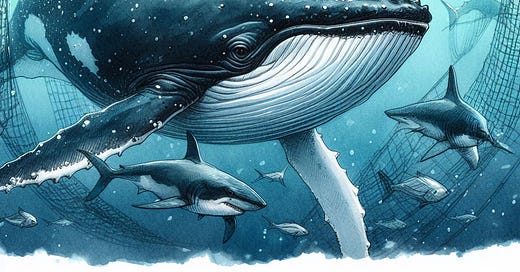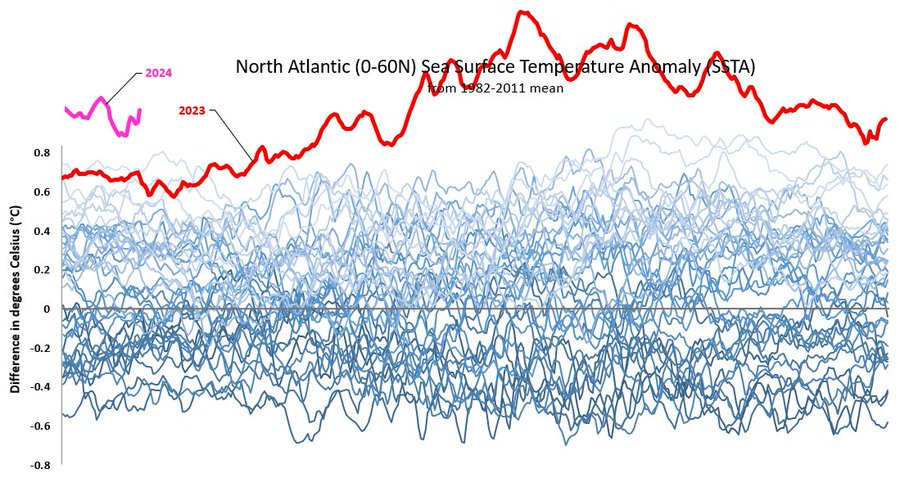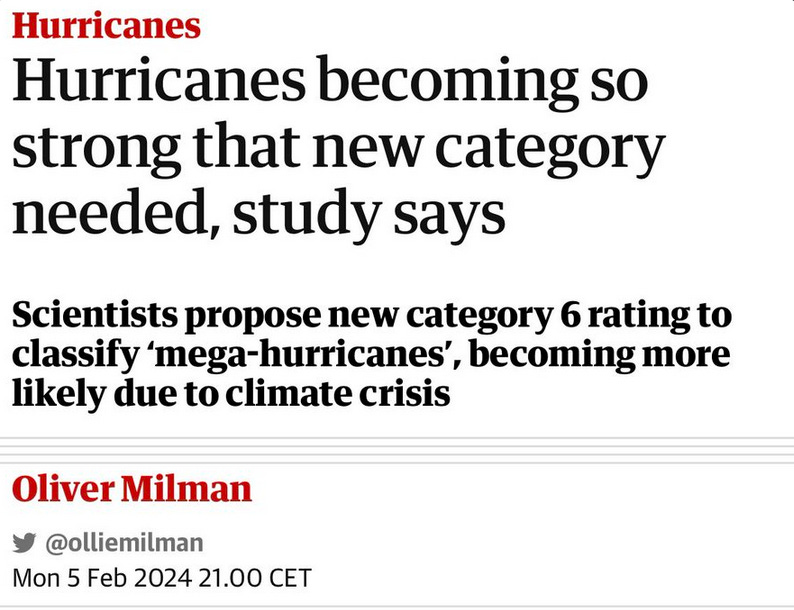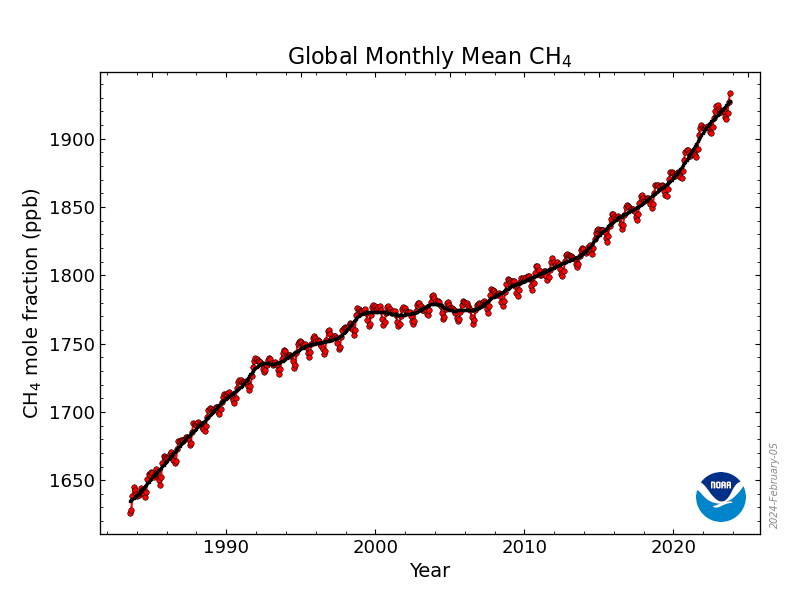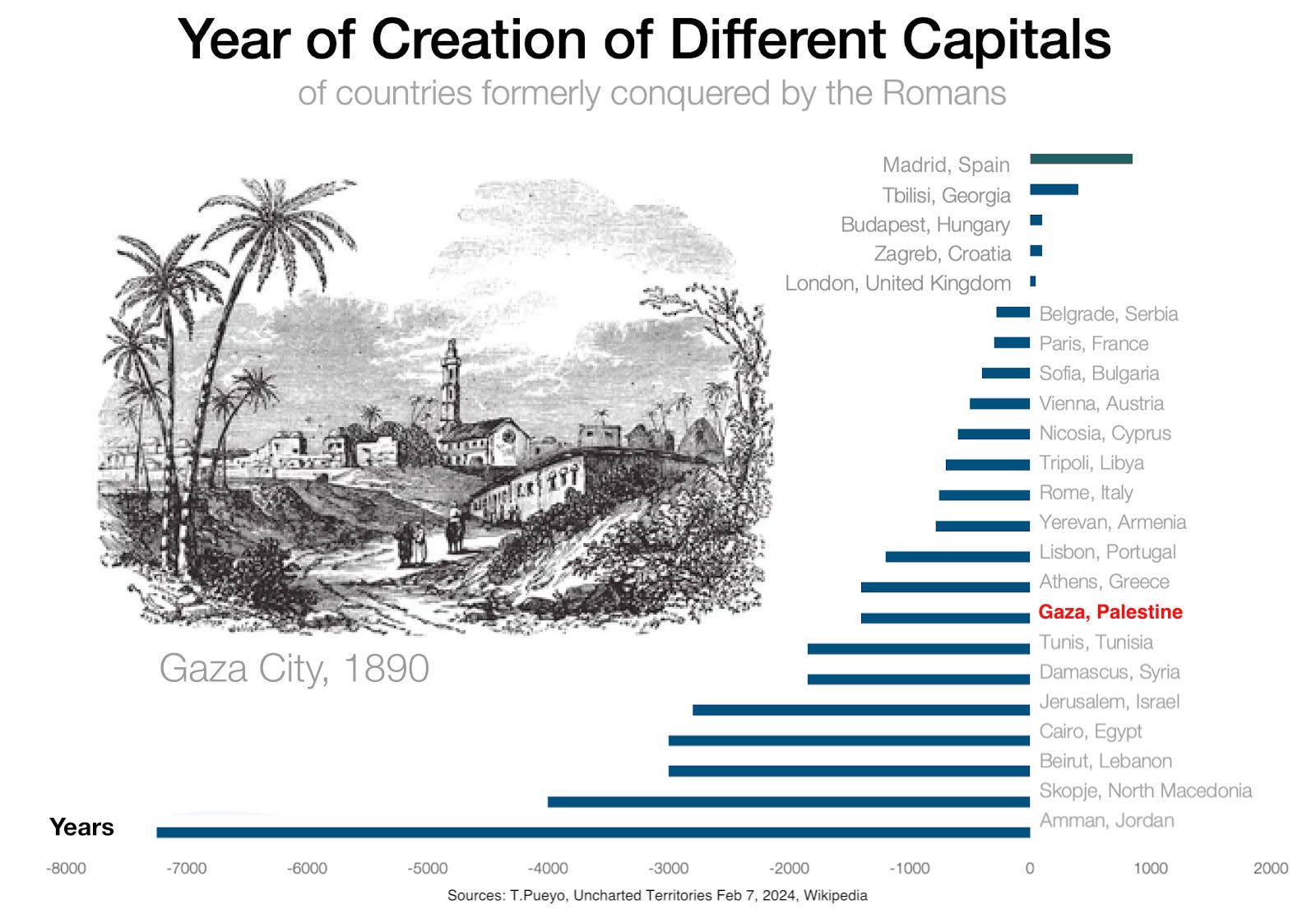Leon Simons (https://twitter.com/LeonSimons8) is a scientist working on aerosol cooling and ocean thermal dynamics. He is part of the Club of Rome Netherlands. He appeared on the UN’s Sustainable Development Solutions Network (SDSN) channel three months ago, Nate Hagen’s Great Simplification January 17 and then Dan Miller's weekly Climate Chat.
For the past few years, he has been filling the Twitterverse with charts like this:
Since the strong regulations on sulfur pollution from ships went into effect in 2020, solar radiation absorbed by Earth has increased about 3 Watts per meter squared in the North Pacific and North Atlantic. Commercial shipping, it turns out, had been geoengineering a cooler planet by pumping sulfur dioxide into the lower atmosphere, reflecting sunlight back to space. Contrails do that too, only higher up. When ship emissions suddenly stopped, what occurred was exactly what the anti-geoengineers have been warning us about—termination shock. The same happened in the days following 9-11 when air traffic was grounded over North America. If you don’t yet believe aerosol reduction contributed to the weather extremes the world witnessed in 2023 (and many well-informed scientists still don’t), just wait because maritime regulations are doubling down in 2024, and AI-assisted greening of air travel will also start to curtail contrails.
What does 3 Watts per square meter mean? Earth has an imbalance between energy (light) gained and energy (heat) lost. In 2021, the imbalance was the equivalent of 800,000 atomic bombs being detonated into the ocean every day, 300 million Hiroshimas per year. It was not enough that we had nuked remote coral reefs at Bikini and Eniwetok, now we’re nuking all the corals in the ocean simultaneously.
You can’t do that for long before consequences arrive. The ocean absorbs more than half of greenhouse gases and takes up 80% of the excess heat. When we hear about fisheries collapsing and corals bleaching, we are only seeing a small part of what’s going on underwater.
Nine years ago, two independent filmmakers began putting out free shorts to educate people about ecosystems and the secrets they hold: How Whales Change Climate; How Wolves Change Rivers; How Devils Heal Forests; How Trees Talk; The Hidden Lives of Bees. The first of those, about humpback whales, was narrated by Guardian columnist, George Monbiot.
If you did not pause reading four minutes to watch that video, Monbiot concludes by saying:
When whales were at their historical populations, before great numbers of them were killed, it seems that they might have been responsible for removing tens of millions of tons of carbon from the atmosphere every year.
Whales change the climate.
In their 2024 NASA paper, “Global Warming in the Pipeline,” NASA’s James Hansen, Leon Simons and a dozen other prominent scientists indicated that 4.8°C warming is already baked in the cake. It’s been masked by aerosols. Take away the aerosols and voila! With sulfur rules in place, we blew through the Paris target of 1.5°C in 2023 and now have 2°C in our sights. Hansen told a UN network interviewer, Jeffrey Sachs:
You're still getting some warming from additions to the imbalance that occurred 100 years ago but as we show quantitatively in the paper, [we can] expect at least a 50% increase in the warming rate and that's what we will we will soon find out.
***
You know one Watt per meter squared is an enormous forcing to try to overcome. I mentioned that if you want to do it by extracting CO2 it costs you more than a hundred trillion dollars. It's not going to happen. So young people need to understand what they are being handed by the older generations.
If you have been following this blog for the past 17 years, recent extreme weather events come as no surprise. The IPCC told us ten years ago that at 1.5°C warming, about 14 percent of Earth’s population will be exposed to severe heatwaves at least once in five years, while at 2 degrees, that number jumps to 37 percent. About 420 million people will be forced to choose: suffer extreme heat or move.
If you think there are immigration problems now, just wait. Longer heat waves and dry spells will affect the most densely populated regions. The closer you are to the equator, the hotter it will be, but the closer you are to the poles, the more extreme the change will be. People in river basins will be particularly vulnerable. The frequency, intensity and amount of heavy precipitation will keep rising. People in normally arid climates may find their refreshing seasonal rains gone altogether.
Pollinating insects, such as bees, hoverflies and blowflies that support and maintain human food supply, will vanish. Trees at the boundaries of boreal forests will die. Instabilities in the Antarctic and Greenland ice sheets will bring multi-meter (greater than 6 feet) sea level rise, inundating coastal cities. Loss of mangrove wetlands will add to atmospheric carbon—as is happening in the Everglades and elsewhere—and remove protection from storms, waves and beach erosion. The ocean will become more acidic and less oxygenated, auguring still more extinctions and dead zones. Those are at 1.5 to 2.0 on the Centigrade scale, but we are on track for 3 to 5 this century. It’s not looking promising for our children and grandchildren.
In an earlier Climate Chat, marine biologist Brian von Herzen related:
Isn't the answer we need orders of magnitude more blue whales then? Yes, exactly! But how does that happen? That happens because this is a process by which you increase the krill population as well. And at the moment, there's a very good krill population around the Southern Ocean, around the Antarctic, and also around the Arctic, but not many other parts of the world. The Arabian Sea has a fair bit. Not many other parts of the world have enough krill to sustain a large population.
The blue whales are now down to probably less than 1 percent of the population they were at 400 years ago. Humanity's first oil discovery was that these whales that live down below the surface of the sea, where it's very cold, have a large amount of blubber to sustain themselves, and that was our first oil. And so we stripped the seas of whales, and the result is that we were taking out this circular process that the whales were essentially responsible for.
The whales were a big part of our carbon sink but there's another point. They were part of creating this food stuff—[fertilized plankton]—for the fish larvae to create this great population. If we look at the stories of sailors from 400 years ago, they knew that wherever they were traveling in the ocean they would catch fish. It's not quite like that today. So I think the point I'm making is this is an amazing potential for restoring biomass to the oceans, but at the same time taking up vast amounts of carbon.
How much carbon dioxide do I think we could capture? If we were to put this artificial whale poo—[fertilized plankton]—if I can use that phrase, on the surface of the oceans, and let's suppose we did it to 2-3 percent of the deep ocean surface. How much carbon dioxide are we likely to fully sequester? Probably, minimally, 3 billion tons a year, maybe maximally 12 billion, 13 billion tons a year. [All anthropogenic emissions were 40 billion tons in 2023, or 50 billion if you count equivalent trace gases].
There's no other way of capturing that amount of carbon dioxide and sequestering it. I do believe that we might have to continue doing this for 40, 50 years, at which point we've got the whale population back up, and as you were saying, we leave the whales to do it, but we need to increase the baleen whales, or the ones with this blubber, we need to increase their population dramatically.
Von Herzen walks the talk, building prototype kelp farms in the Pacific Ocean; nurseries for the marine food chain he speaks of.
Will we restore the baleen whale population before the ocean becomes inhospitable to them? Probably not. They may all die of plastic polymer gut microbiome if not starvation. We can likely add them to the growing list of extinct species, despite von Herzen’s best efforts. But this we know: The ocean absorbs 80 percent of global warming. It could also provide 80 percent of the solution.
I’ll continue this in this space next week as I continue dissecting doomism with a look at Professor Eliot Jacobson’s interview on Climate Chat last Sunday. Please rejoin me.
There is a growing recognition that a viable path forward is towards a new carbon economy, one that goes beyond zero emissions and runs the industrial carbon cycle backward — taking CO2 from the atmosphere and ocean and putting it in the ground. The triple bottom line of this new economy is antifragility, regeneration, and resilience.
Meanwhile, let’s end these wars. We support peace in the West Bank and Gaza and the efforts by the Center for Constitutional Rights, National Lawyers Guild, Government of South Africa and others to bring an immediate cessation to war. Global Village Institute has sponsored the Green Kibbutz network in Israel and the Marda Permaculture Farm in the West Bank for over 30 years and will continue to do so with your assistance. We aid Ukrainian families seeking refuge in ecovillages and permaculture farms along the Green Road and work to heal collective trauma through the Pocket Project. You can donate by directing donations to us at ecovillage@thefarm.org. You can read about it on the Global Village Institute website (GVIx.org). Thank you for your support.
Help me get my blog posted every week. All Patreon donations and Blogger, Substack and Medium subscriptions are needed and welcomed. For reasons unrevealed to us, Meta, Facebook and Instagram have blocked our accounts. You are how we make this happen. Your contributions can be made to Global Village Institute, a tax-deductible 501(c)(3) charity. PowerUp! donors on Patreon get an autographed book off each first press run. Please help if you can.
If you are interested in climate solutions, one of the world’s most effective conferences will be in Sacramento February 12–15. Contact me directly for a $200 discount on registration. Some of the latest inventions will be in the exhibit hall where Global Village Institute will have a booth.
Following that, I will be in Santa Barbara for the 2024 Eco-Hero Award. Y’all are invited!
Thank you for reading The Great Change. This post is public so feel free to share.
#RestorationGeneration
“There are the good tipping points, the tipping points in public consciousness when it comes to addressing this crisis, and I think we are very close to that.”
— Climate Scientist Michael Mann, January 13, 2021.


